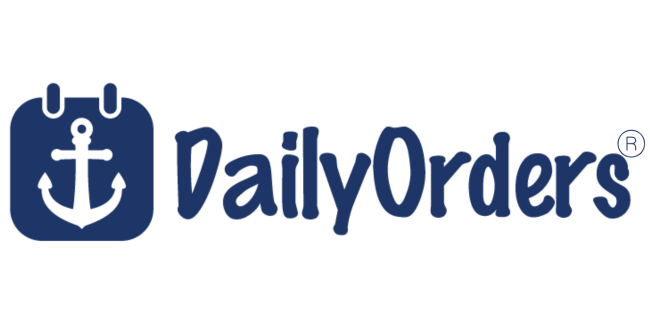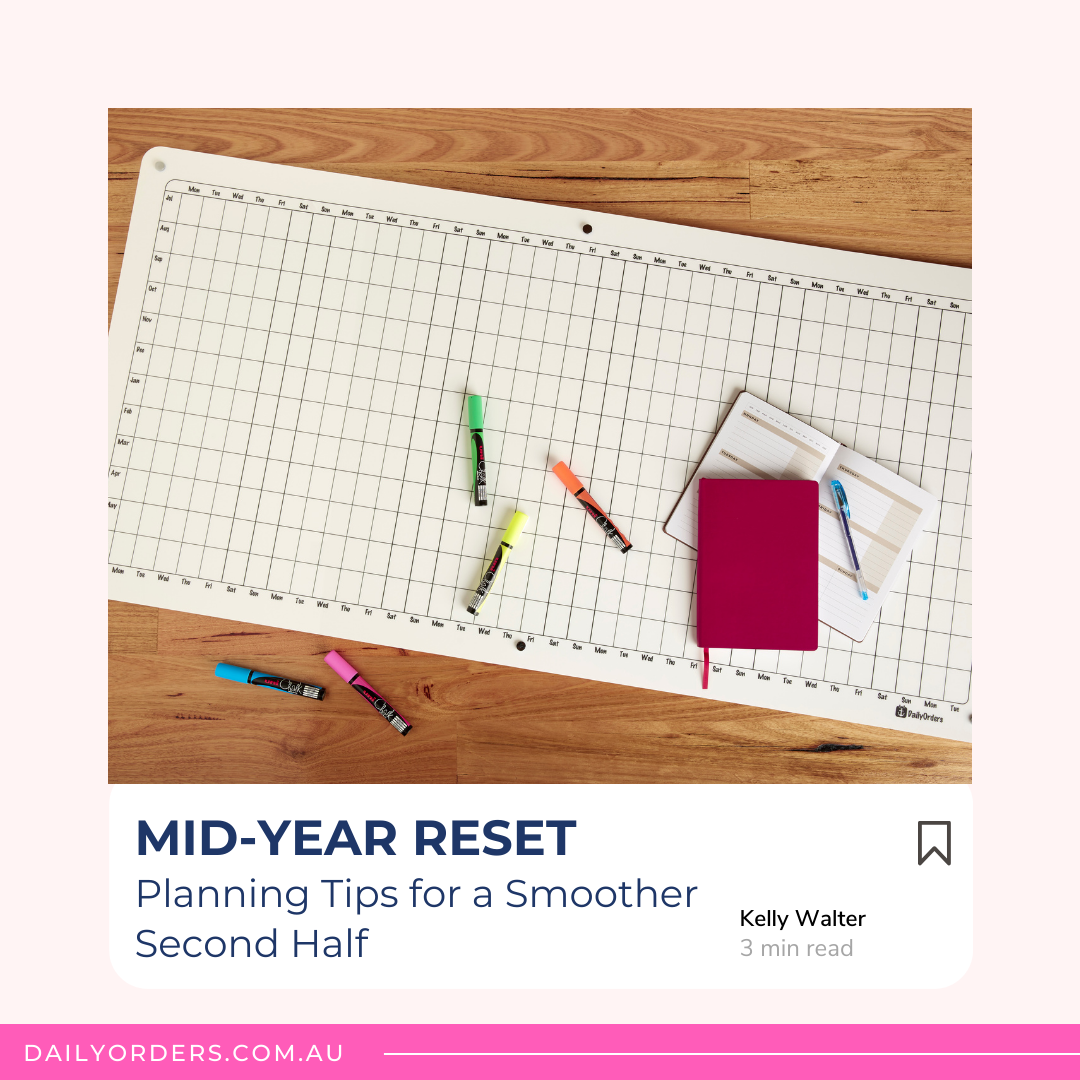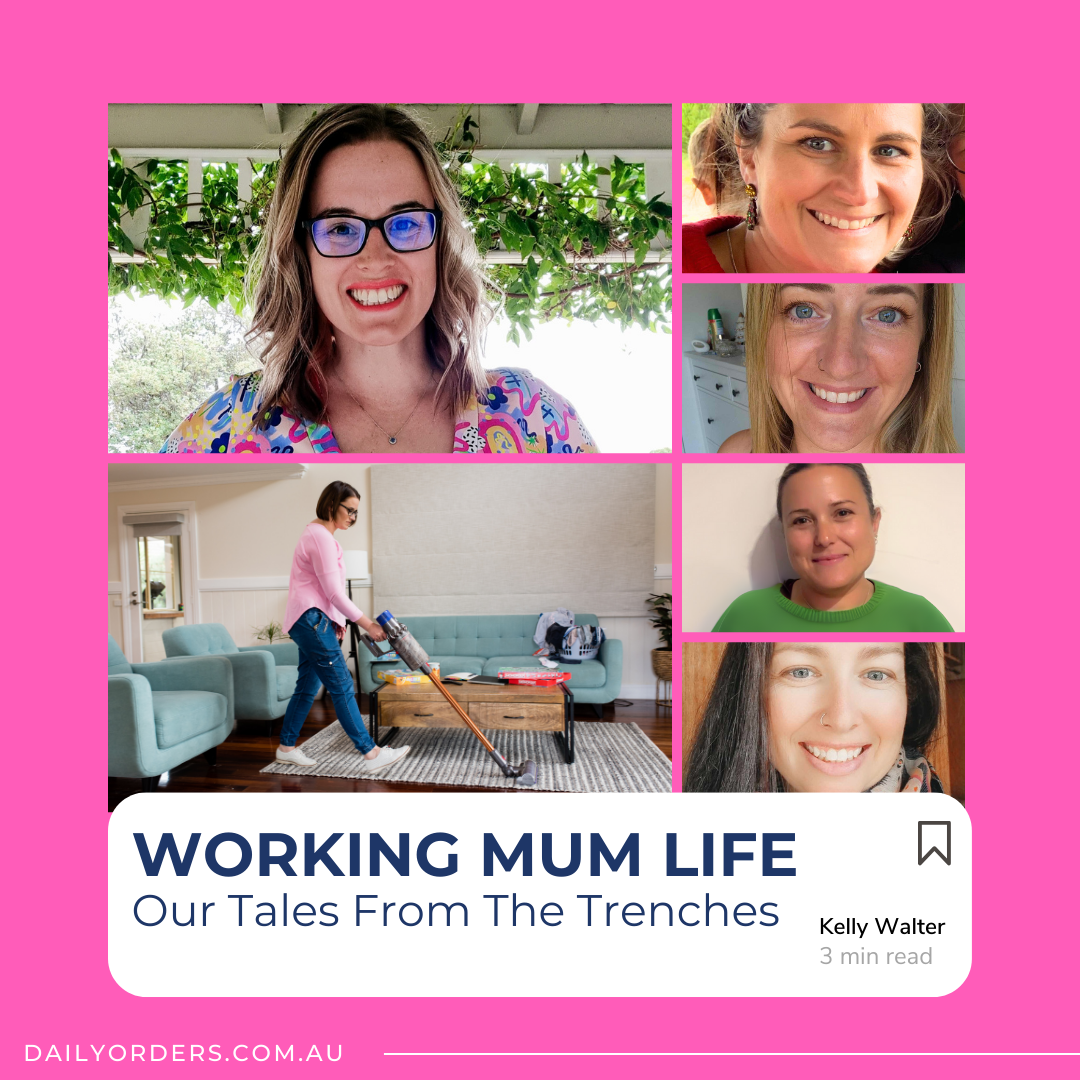ADHD (Attention Deficit Hyperactivity Disorder) is a superpower in a lot of ways. Quirky. Funny. Creative. Kind. Energetic. Spontaneous. On the other side of the coin? Forgotten homework. Big emotions. Distractibility. Hyperactivity.
If you’re a parent with ADHD with children who also have ADHD (hello friend, I see you!) you’ll know how chaotic life can be. I mean, it is kinda funny rocking up to lunch at the wrong restaurant (in my defence, both of them started with an ‘E’!) but you also want to function, you know?
Personally, I wouldn’t change a hair on my neurodiverse family's head but since I want to avoid the official title of ‘the hot mess’ family, I keep a schedule. Not just any schedule though, a big, visual, colourful one.
This isn’t yet another article saying you need a new planner. You’ve likely got a draw full of them. Us ADHD-ers are experts in buying wall planners.
No, this piece is about hacking your weekly, monthly or annual planner in an ADHD-friendly way so you’ll actually use it and hopefully, iron out some of that overwhelm.
ADHD planners turn a routine into something fun
If I had a dollar for every time I’ve had to remind my almost 9-year-old he needs BOTH socks on before we leave the house (he gets distracted a LOT) or that brushing teeth is a twice-daily affair, I’d be loaded.
The thing is, our brains are wired differently from neurotypical brains. If the task isn’t interesting, urgent or a novelty, we struggle. Before you say“don’t we all?”, research has proven we have a chronically insufficient supply of dopamine which affects our executive functioning.
There’s a quote I saw on Instagram recently that described my brain to perfection:
ADHDers are like:
“We can do hard things. We just can’t do easy things.”
I can dream up a new app, write a business plan, and create incredible things but do you know what I can’t do? Pay my bloody phone bill! My son is exactly the same. His kryptonite is shoes, socks, grooming and the like while mine is adulting, paying bills and doing any sort of paperwork.
So we can function in a neurotypical world, we create routines wired to suit our unique needs. Object permanence means if we can’t see, hear or touch it, it doesn’t exist. Like at all. We need visual and tactile routines to fill the executive functioning gap.
Cue, aTo-Do List, colourful Acrylic Markers and FUN.
Yes, I need to reminders to eat, pick the kids up, pay bills and switch my brain off - thanks hyperactivity! Having a visual tool like a weekly planner board helps keep me and my brain in check.
This handy chore chart also doubles as a reward chart. I make it simple, achievable and most of all, dopamine-enhancing.
Non-boring planners for ADHD to organise your life
You know how I mentioned object permanence? Well, it means my brain organises life in two ways.
- Now as in “YOU HAVE THREE MINUTES TO GET THE KIDS TO SCHOOL!”
- Not now as in not right this second = task doesn’t exist.
It doesn’t leave much room for a weekly plan let alone one of those 5-year-plans adults seem so fond of. Ha! It’s all fun and games until you get overdue fees and forget your kid's athletics carnival. EEP.
As much as I’d love to say digital planners do their job, they just don’t carry the weight of a paper planner or visualmonthly organiser. My brain files electronic reminders in the ‘not now’ pile. Colourful, tactile, easy-to-use ADHD planners though? Paper planners keep me accountable in the world of daily planning and time management. There's something about the blank pages that make paper planners into passion planners for me. They're an important tool in my 'planner for ADHD' kit.
I tackle family planning monthly. That way I can glance at the schedule and see exactly what’s happening next, use it for meal planning and more. It helps to train my ‘now vs not now’ blind spot too, win!
ADHD planners work excellently for my son as he can also see what our family is up to and keep us all on the same page. That way, he can mentally prepare himself for big events. Transitions and crowds can be overwhelming for him so the heads-up is a MUST.
Cue, a Medium Command Centre, colourful Acrylic Markers and FUN.
Executive functioning & ADHD
So to recap, ADHD impacts executive functioning. This can present in:
- Planning and prioritising tasks
- Focusing, sustaining and shifting attention to complete tasks
- Sustaining effort when the task doesn’t interest us or give us a dopamine hit
- Working memory for non-interesting things
ADHD Planner Tips:
- Break down big tasks
- NO: ‘get ready for school’
- YES: ‘put on shoes’ + ‘get hat and lunchbox’
- Create a predictable routine with to-do lists
- Achievable rewards
- Using tactile, visual planners for ADHD
- Easy-to-follow planner system
- Easy-to-use, best agenda day planner
I hope this helps and remember, ADHD brains are beautiful. Just don’t expect us to do the easy things without struggle, ha!
Marissa x





Leave a comment (all fields required)